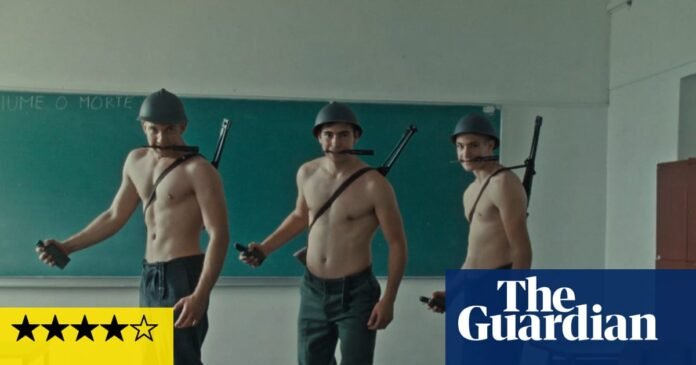This intriguing documentary from Croatian film-maker Igor Bezinović is partly a comic opera and partly a chilling message from the past. It is about Bezinović’s hometown of Rijeka, a port on the Adriatic which after the first world war was the site of one of the 20th century’s strangest episodes, whose key moments the director stages through re-enactments with locals. The film is in effect a protofascist Passport to Pimlico.
In 1918, this city, with its significant ethnic Italian population, was known as Fiume and was formerly ruled by the recently destroyed Habsburgs. After the war it was not absorbed into the victorious Italian nation as many expected but left under the control of the Kingdom of Serbs, Croats and Slovenes (whose name was later changed to Yugoslavia). Enraged by this betrayal, hothead Italian aristocrat, poet and cocaine addict Gabriele D’Annunzio led a bizarre insurgency with 186 mercenaries or “legionaries”, with whom he carried out a sub-Napoleonic landing in Fiume and established it as a kind of pro-Italian city state under his absolute control.
This supposed romantic visionary attracted many discontented, unemployed men from Italy to serve as his soldiers, and the mini-realm lasted until 1920, when Italy itself forced D’Annunzio out. He staged many massed marching displays and spectacles which created the illusion of huge popular support – but when plebiscites indicated that the non-Italian majority were against him, the votes were scrapped. A maritime incident involving a Croat attack on an Italian ship in Split was the pretext for brutal assaults on non-Italian businesses in Fiume, a grisly curtain raiser for Kristallnacht. The young Benito Mussolini was a huge admirer of D’Annunzio and later adopted his followers’ stirring song Giovinezza, or Youth, as his own fascist anthem. Many international celebrities affected to admire D’Annunzio, including Marconi and Toscanini, whose visits the movie records here.
Bezinović amusingly gets many different local Rijeka men to play D’Annunzio in high-spirited little tableau-style scenes which mimic the old photos and archive footage. One of the D’Annunzios is a middle-aged man whom Bezinović describes as a former military officer and “veteran of the Croatian war of independence”. Does the director intend to remind us, almost imperceptibly, that even though his town’s current identity is a rebuke to the old fascist interlopers, no country has a monopoly on nationalism or fascism?




